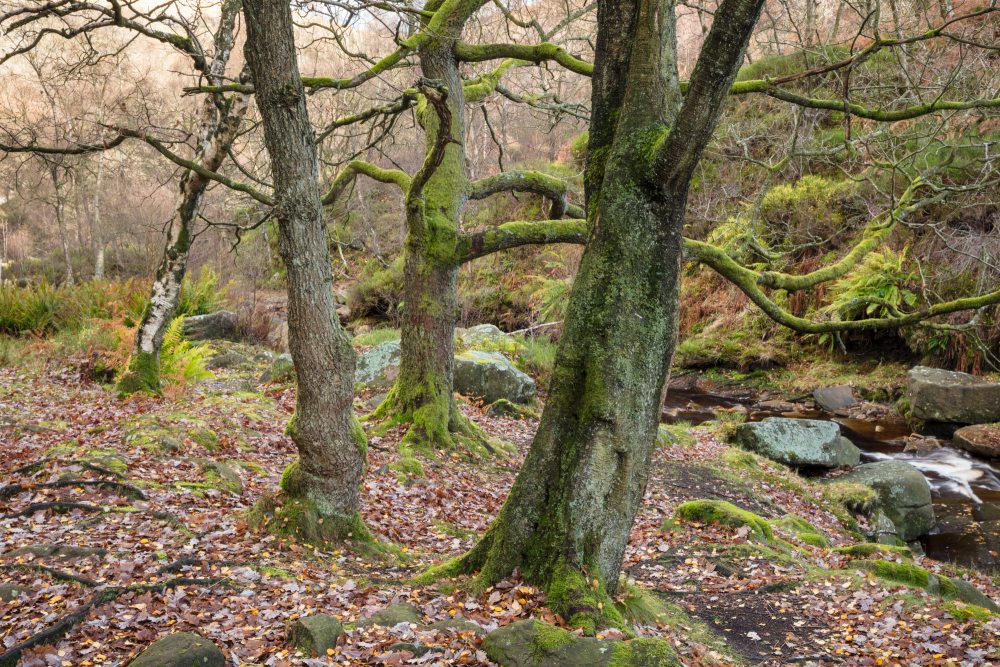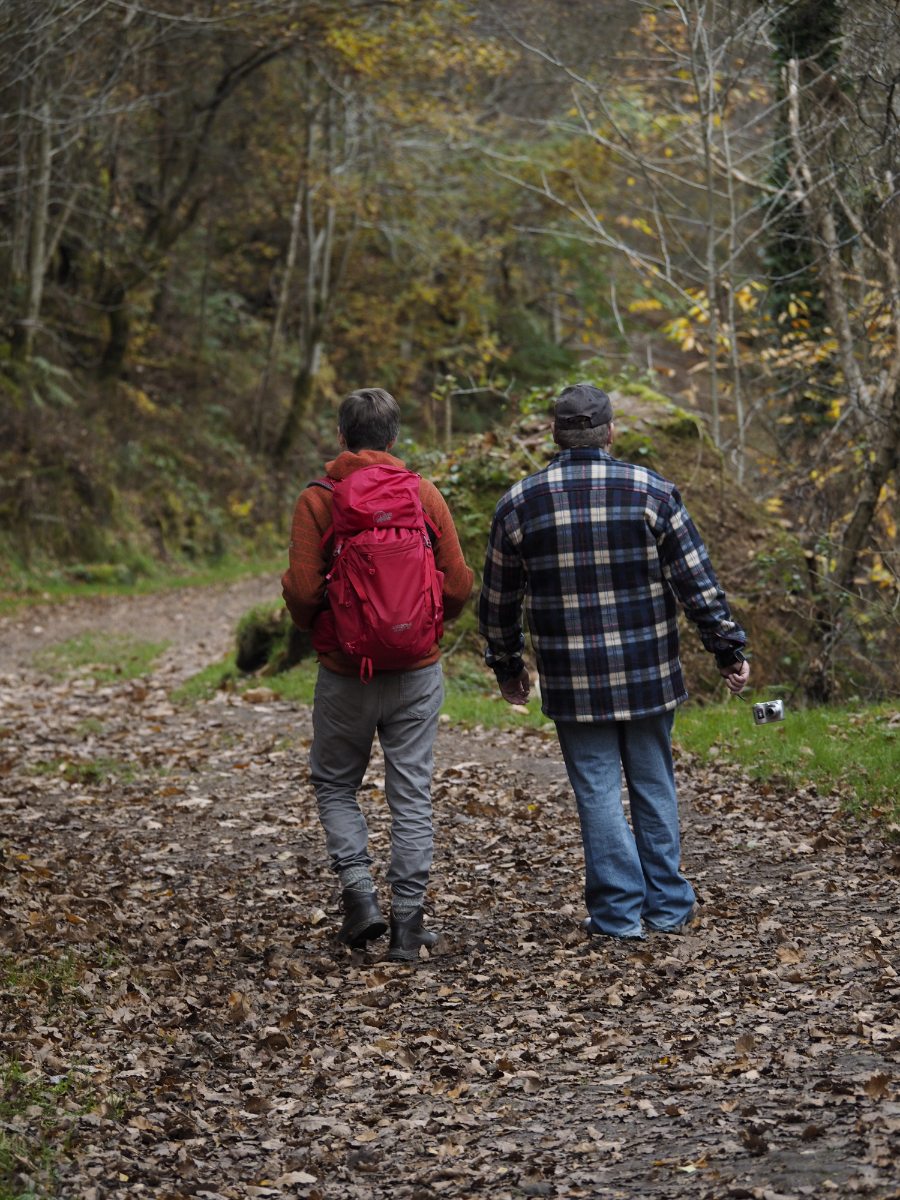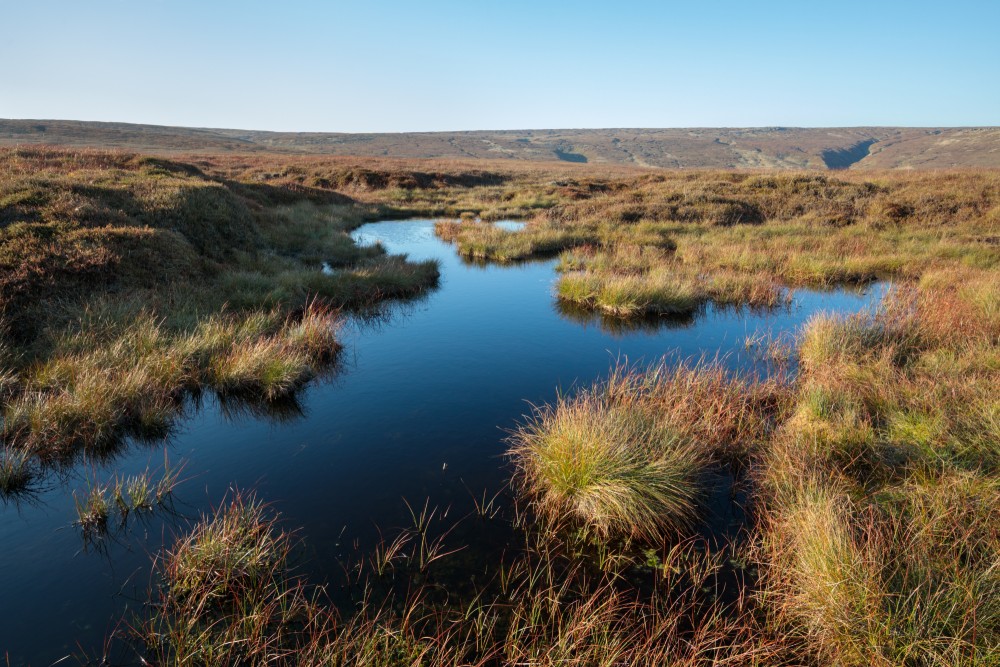‘Clough’ is a local term for a small valley
Clough woodlands are found in steep-sided ravines on the edge of open moorland
They provide shelter in an otherwise open landscape
The importance of clough woodlands
These upland broadleaf woodlands are an important component of the mosaic of upland habitats. They contribute to the services that upland habitats provide for us. Wooded valleys help to reduce erosion, improve water quality and reduce flood risk downstream. They help to store carbon by helping to protect the moorland peat and also within the woodland itself. The Clough Woodland project works to conserve and extend these upland woodlands for all their benefits.
As they trace the routes of streams, from the high moorlands to the lowlands, clough woodlands connect moorland to other high value habitats, providing routes for wildlife to move through and disperse.
Clough woodlands support woodland birds, mammals and insects and provide food and shelter for moorland species and livestock, too. They contain a variety of native tree species such as oak, aspen, rowan, bird cherry and birch, as well as shrub species including hazel and bilberry, all providing important food sources, nesting sites and shelter. Woodland wildflowers from cow-wheat to bluebell thrive in their shelter.
They provide habitat for insects including the northern wood ant and purple hairstreak butterfly. Small mammals including shrew and vole forage and breed along with their predators, weasel and short-eared owl, and perhaps pine marten, too. Declining bird species such as the spotted flycatcher and wood warbler all make the most of their precious resources, and the woodland–moorland margins are of special value for nightjar and tree pipit.

Disappearing habitats
Human management of moorland has led to clough woodlands becoming fragmented or lost entirely. And with them essential wildlife habitats and resources are lost, along with the other benefits they provide for us.
Supporting biodiversity
As they trace the routes of streams, from the high moorlands to the lowlands, clough woodlands connect moorland to other high value habitats, providing routes for wildlife to move through and disperse.
Clough woodlands support woodland birds, mammals and insects and provide food and shelter for moorland species and livestock, too. They contain a variety of native tree species such as oak, aspen, rowan, bird cherry and birch, as well as shrub species including hazel and bilberry, all providing important food sources, nesting sites and shelter. Woodland wildflowers from cow-wheat to bluebell thrive in their shelter.
They provide habitat for insects including the northern wood ant and purple hairstreak butterfly. Small mammals including shrew and vole forage and breed along with their predators, weasel and short-eared owl, and perhaps pine marten, too. Declining bird species such as the spotted flycatcher and wood warbler all make the most of their precious resources, and the woodland–moorland margins are of special value for nightjar and tree pipit.
Clough Woodland Project
More about the work we do to create and protect clough woodland habitats in moorland landscapes

